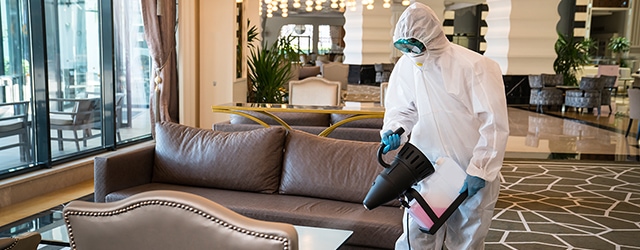Many companies reinvent themselves to survive.

When Covid-19 brought the global hospitality industry to a standstill, Starhotels was ready with a plan. The Florence-based luxury hotel operator launched its Grand Tour concept in July, after Italy got the pandemic’s first wave under control. Grand Tour itineraries recreate the circuit that wealthy European scions traditionally made of Italy’s top cultural destinations to put the cherry on top of their university education. They also represent the company’s first step in a strategic shift from accommodation to full-service vacation planning.
Crucially, given the lockdown’s financial stresses, the company won’t need to hire or fire personnel to execute its new strategy. And, since American tourists normally account for a large portion of its customer base, “promotion is mostly aimed at the domestic and European markets” until leisure travel from the US to Italy is again permitted, says global group marketing director Alessandro Pinna.
The coronavirus pandemic is only the latest upheaval to have forced companies around the world into a painful choice: Reinvent themselves or go out of business. Global economic crashes, technological disruption and shifts in consumer demographics or behavior can prompt the C-suite to radically rethink corporate strategy. In transformative times, even successful firms must often go back to the drawing board or die.
Indeed, some of the world’s most iconic brands have reinvented themselves so thoroughly that today they barely resemble their early incarnations. Finland’s Nokia started as a paper mill. Royal Dutch Shell originated in a London antique shop. American Express shipped freight, gold and cash between the coasts during the US Gold Rush. India’s software and outsourcing behemoth, Wipro, was originally Western India Vegetable Products.
All these companies’ makeovers happened under pressure. The railroad made American Express’ transcontinental service obsolete; Wipro couldn’t manufacture soaps and cosmetics as economically as giants like Unilever or Procter & Gamble. As for Starhotels: Even before the pandemic hit, internet-based home-sharing services like Airbnb were threatening its business model. That’s why the Grand Tour, explains Pinna, isn’t about finding a place to stay. “We don’t sell rooms,” he says. “We sell memorable experiences.”
Reinvention is a high-risk business plan, but McKinsey research suggests that inaction can be even more dangerous. Faced with industry disruption, “when you’re parked on the side of a volcano, staying put is your riskiest move,” according to an October 2019 report in the McKinsey Quarterly by three senior partners who lead the firm’s strategy practice. They argue that successful reinvention requires some combination of five activities: two performance-related (boosting productivity and innovation) and three portfolio-related (reallocating resources, embarking on an M&A program and ramping up capital spending). Firms must implement these changes on an industry-beating scale, however: Incremental productivity enhancements or capex increases won’t cut it.
Nor can the big moves take place haphazardly. “In our experience,” write the consultants, “companies that are most successful at transforming themselves sequence their moves so that the rapid lift of performance improvement provides oxygen and confidence for big moves in M&A, capital investment and resource reallocation.”
In almost every industry, the internet has put countless companies out of commission. One that has remade itself multiple times is Netflix, which this summer—at the tender age of 23—pushed past hallowed Walt Disney in market capitalization. First, Netflix became a category killer in movie rentals, sending customers DVDs by mail and charging per disc. It quickly moved to a subscription revenue model and has never looked back.
The first radical transformation came when the company pivoted to streaming movies, in 2007. Six years later, it began producing original content. Today, the company is releasing around 60 original movies and TV series per month—far more than streaming rivals like Amazon Prime Video, Disney Plus or Apple TV—and acquiring prominent new works at film festivals. Next, it will focus on customizing fresh content for non-US markets, which already contribute more than half of subscriptions and continue to grow.
In his recent book, No Rules Rules: Netflix and the Culture of Reinvention, co-CEO Reed Hastings attributes his company’s nimbleness to a management manifesto of “freedom and responsibility” that “valued people over process.” The company is also outspending rivals and borrowing heavily to do so. Analysts predict Netflix will invest more than $17 billion in content this year; the company had $15.3 billion in outstanding debt as of the second quarter. Yet in its July earnings letter, the firm says it expects free cash flow to enter positive territory in 2020. Meanwhile, the Covid crisis is boosting subscriptions, and viewers are so far tolerating price hikes just fine. As for investors, Netflix shares, at around $470 on September 18, are up from $290 and change 12 months ago.
These outcomes suggest that the McKinsey thesis of transformation—essentially, betting big pays off—can be a sound one. But some management gurus say there’s a lot to Hastings’ cultural approach, too.
Mike Beer, professor emeritus at the Harvard Business School and author of Fit to Compete: Why Honest Conversations about Your Company’s Capabilities Are the Key to a Winning Strategy, has long believed that many companies aren’t organized for transformation. C-suite executives often don’t want to hear what processes aren’t functioning, how the market is shifting or where management is impeding progress. A successful reinvention, he adds, requires the C-suite to let the rank and file speak truth to power. “If you want to create a fundamentally different organization, which the world calls for right now, you have to suspend the hierarchy,” Beer says. “A hierarchy stops ideas from flowing.”
Another obstacle is the tyranny of quarterly earnings. When CFOs exert too much influence, and when boards compensate senior management on the basis of stock performance alone, “the company begins to run on finance,” says Beer—and he believes that impedes innovation.
Is transformation tougher for a large, long-established, publicly traded corporation than for a smaller, newer business? Not if you ask IBM. From punch cards to mainframes to PCs to AI, the technology giant has reinvented itself many times since its founding in 1911. Still, its most recent makeover—into cloud platforms and AI—has been bumpy. In the years leading up to 2017, Big Blue posted 20 consecutive quarters of declining revenue, notes Jim Kelleher, who covers IBM for Argus Research. “They they were trying to bolster earnings through financial engineering,” chiefly share buybacks, he says.
But lately, the company has spent far more on capital investments (largely for cloud infrastructure), acquisitions and R&D. According to a spokesman, IBM invested $86 billion in the business between 2015 and 2019, nearly five times more than the $18.2 billion it spent on buybacks. And it has suspended share repurchases for 2020 and 2021, to help finance last year’s $34 billion purchase of open-source software provider Red Hat. Kelleher calls the deal a broad-stroke acquisition aimed at putting IBM into the hybrid-cloud big leagues, where it’s competing with global giants like Amazon, Microsoft, Alphabet and Alibaba.
Mike Danitz, who leads the CFO Strategy and Finance Transformation practice at Deloitte, says an organization’s size, scale and complexity obviously affect the cost of a reinvention. “Large, entrenched company CFOs need to build a more comprehensive business case than the CFO of a startup whose organization was potentially started on a more nimble, digital foundation and can pivot easier and at a lower cost,” writes Danitz in an email.
He adds that Deloitte sees many of the same finance trends playing out in markets around the world. Finance departments are adding digital capabilities that give them more insights to the organization, improve efficiency through automation and help standardize global processes—all of which facilitate transformation. “It should be noted, however, that most Western Hemisphere and Asian countries are more friendly to rapid corporate reinvention, while most (but not all) European countries have worker councils and labor laws that slow down the process,” he writes.
Regardless of a company’s location, size or age, history teaches that reinvention is often the only alternative to obsolescence. Another lesson: A long-term perspective, thoughtful internal communication and the courage to spend can boost the odds of success



